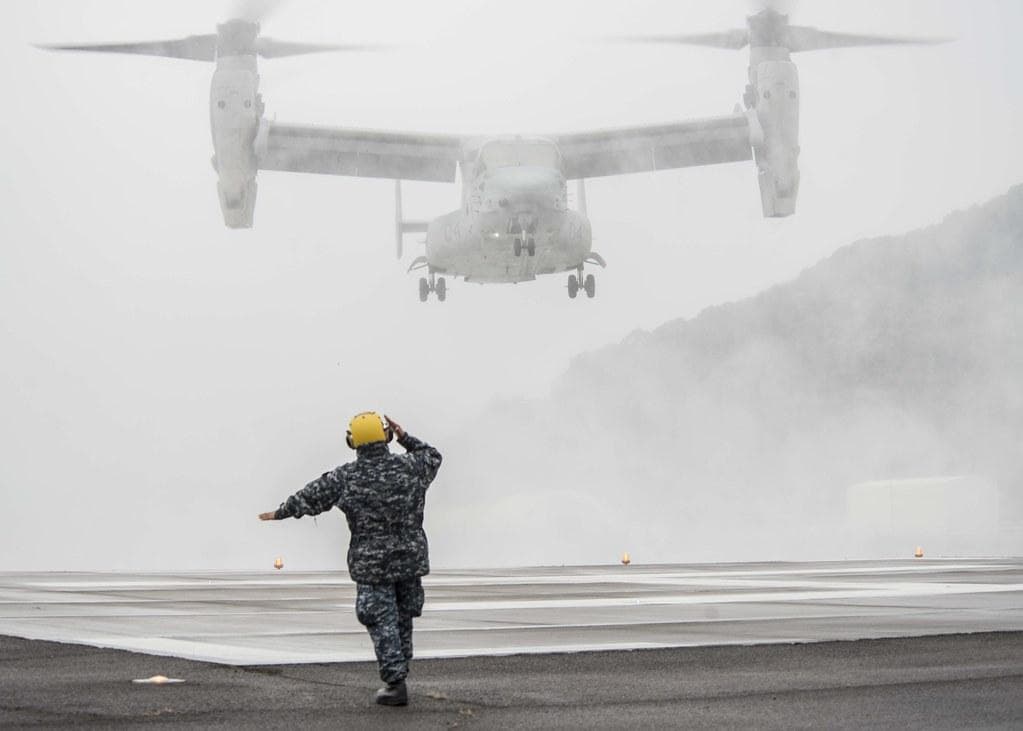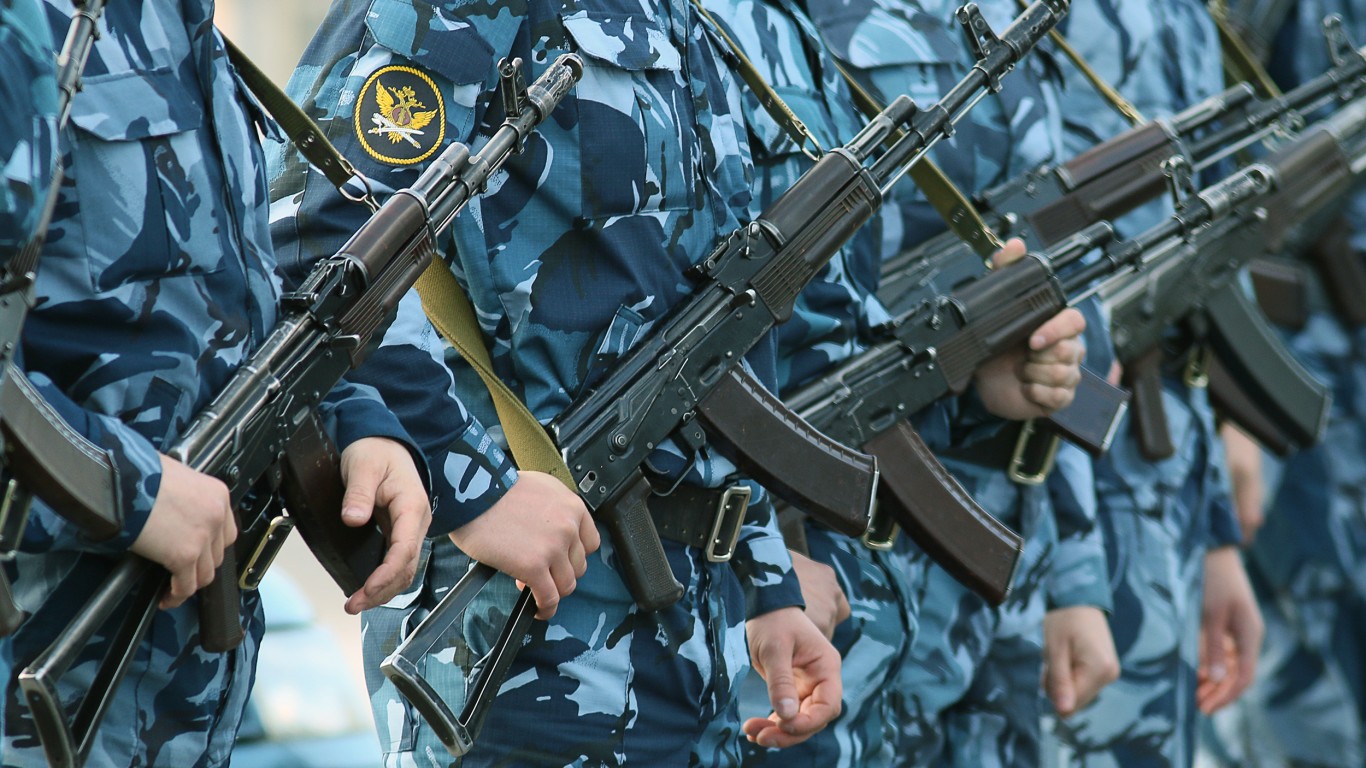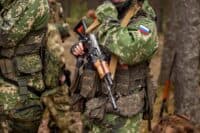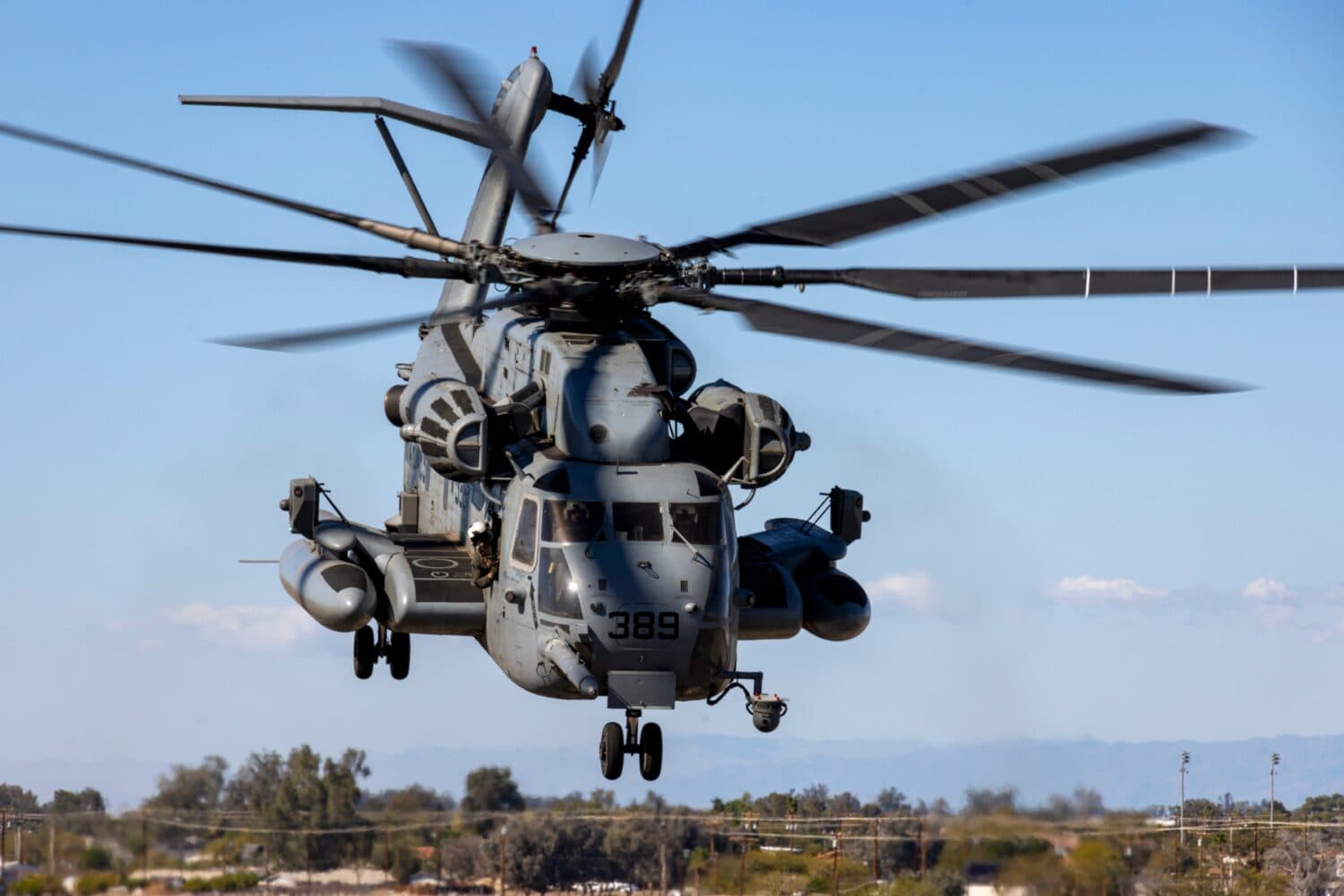
The U.S. Marine Corps traces its history as one of the storied branches in the U.S. military. Founded in 1775, the Marines have been a pivotal force in every major American conflict. Known as “the few, the proud,” Marines don’t just specialize in amphibious assault operations but they are always the first to the fight. As such, the weapons and assets they use for their operations reflect their fighting spirit and enduring legacy. (The Marine’s Highest-Ranking Four-Star Generals make over 200k per year.)
Since the introduction of the helicopter, these rotor-based aircraft have been instrumental in Marine operations dating back to their widespread use in the Vietnam War. From assault to transport, or reconnaissance to supply, helicopters are vital in helping Marines get the job done.
Here, 24/7 Wall St. is taking a closer look at the helicopters the U.S. Marine Corps currently uses for its operations. To identify the oldest helicopters currently in service of the U.S. Marine Corps, 24/7 Wall St. reviewed data from the 2024 World Air Forces report from FlightGlobal, an aviation and aerospace industry website, and ranked the helicopters chronologically. Additionally, we’ve included supplemental information on the type of aircraft, top speed, how many are in active service, and armament. We excluded trainer aircraft.
One staple of the Marine Corps is the AH-1Z Viper. It is a twin-engine attack helicopter that was introduced to service somewhat recently in 2010. These helicopters come with advanced targeting systems that play into a number of weapons they can employ. Its offensive capabilities make it ideal for close air support and precision strikes. The Viper has been deployed in a few combat theaters, including Afghanistan and Iraq, where its speed and firepower have been instrumental in these roles.
The AH-1Z’s original design is based on the iconic AH-1 Cobra, which rose to prominence during the Vietnam War. Notably, one of the biggest upgrades from its predecessors is its twin-engine design, powered by General Electric T700-GE-401C turboshaft engines, which allow the Viper to hit much higher speeds than most helicopters. With these, the Viper ranks as one of the fastest attack helicopters in the world, hitting speeds over 250 mph.
While the Viper is one of the newer helicopters to enter the Marine Corps, there are a handful of other helicopters that have a storied history with the Corps as well.
Here is a look at the oldest helicopters currently in service in the U.S. Marine Corps:
Why Are We Covering This?

Understanding the aircraft used by the U.S. Marine Corps provides insight into joint military capabilities and expeditionary defense strategies. Knowing what the Marine Corps has in its arsenal sheds light on its unique ability to project power quickly and operate in different environments. This also gives context to the tactical flexibility and logistical reach the Corps brings to its operations, from amphibious assaults to close air support. Lastly, the composition and technological sophistication of the Marine Corps’ aircraft fleet highlight its ability to maintain dominance and execute rapid response missions.
5. CH-53K King Stallion
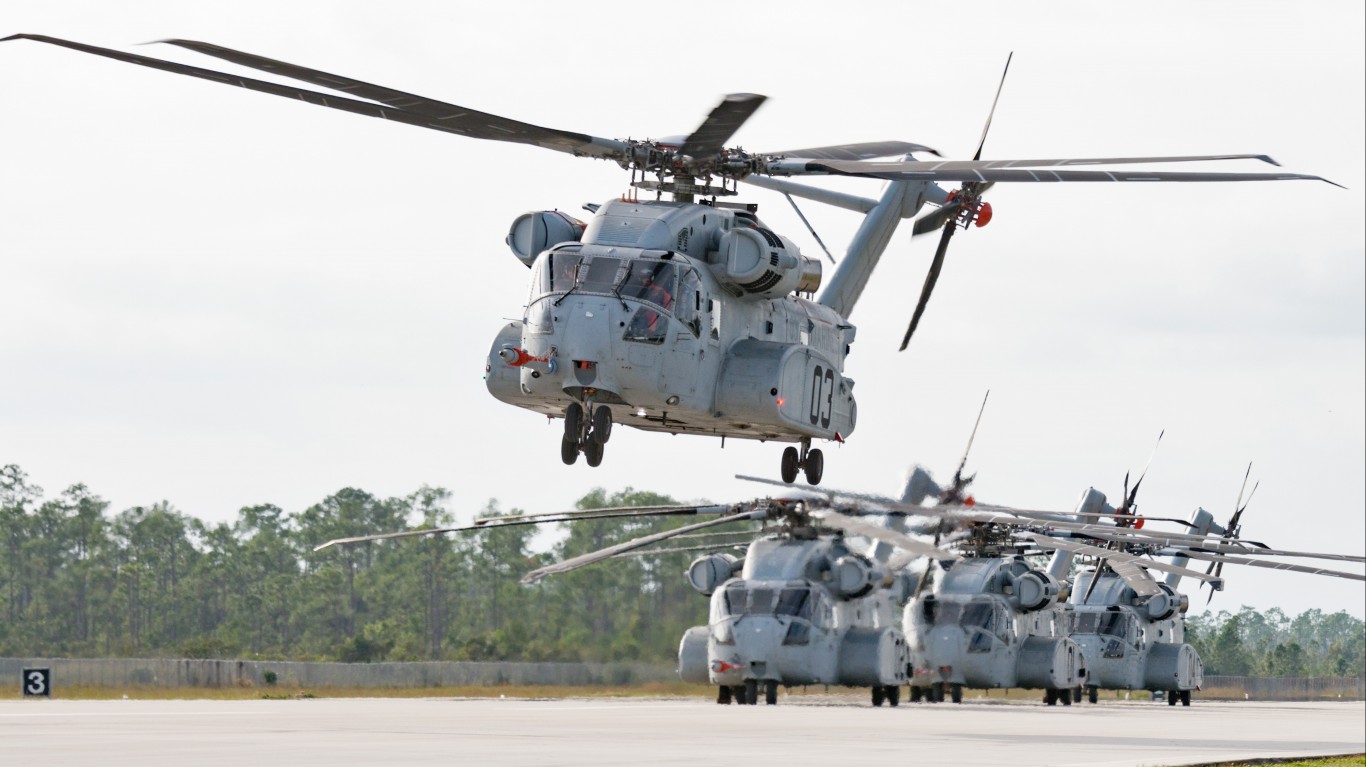
- Type: Heavy-lift transport helicopter
- Year introduced: 2018
- Active aircraft: 11
- Top speed: 196 mph
- Armament: 12.7mm heavy machine guns, 12.7mm GAU-21 miniguns
The CH-53K King Stallion is the newest heavy-lift helicopter to enter the U.S. Marine Corps’ arsenal. It is truly a game changer in military aviation. Built by Sikorsky, the King Stallion is capable of lifting over 36,000 pounds, which is roughly three times more than its predecessor, the CH-53E Super Stallion.
Also, the CH-53K has undergone serious upgrades further improving on the Super Stallion design from the 1980s. This newer variant incorporates fly-by-wire controls which allow for better precision in piloting as well as improved fuel efficiency and range. The King Stallion also features larger cargo space and upgraded avionics and sensors.
The King Stallion can hit a top speed of nearly 200 mph, and can be equipped with 12.7mm general purpose heavy machine guns and 12.7mm GAU-21 miniguns.
4. AH-1Z Viper
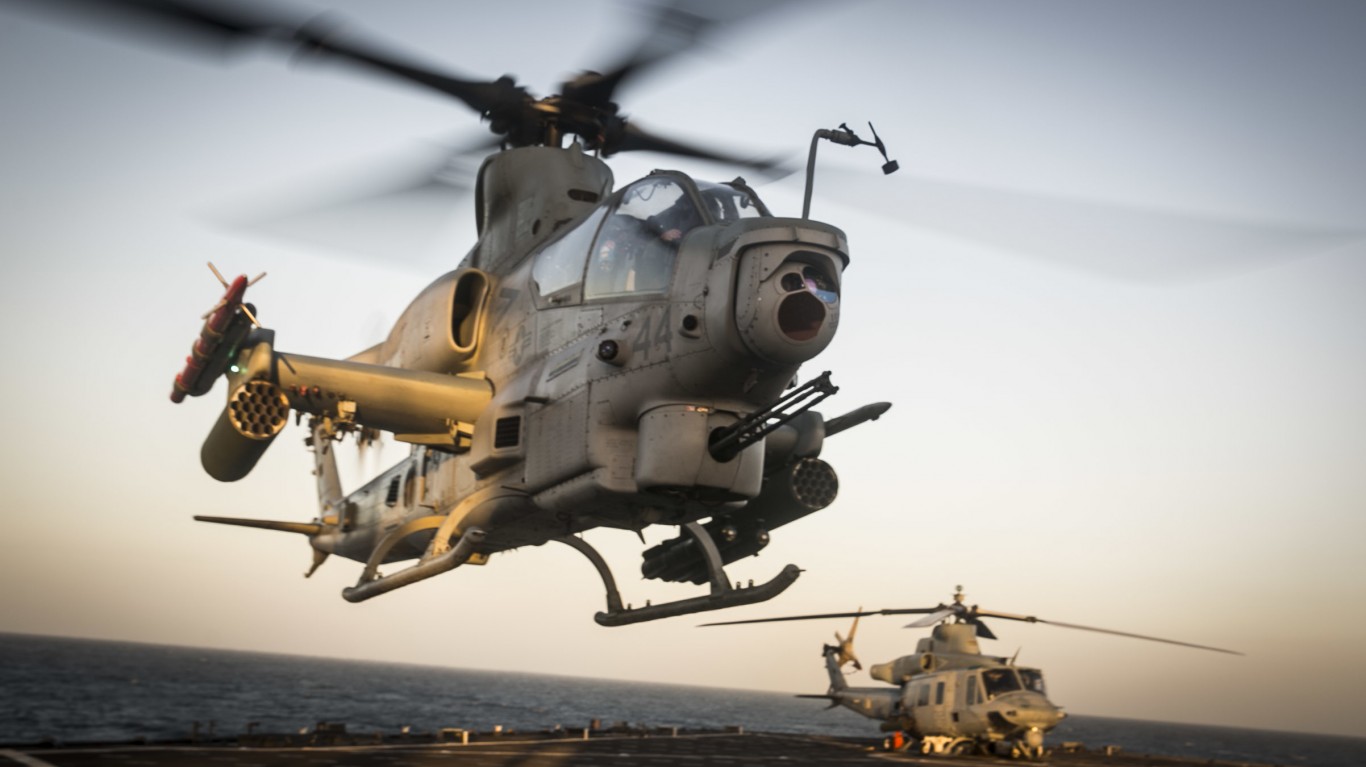
- Type: Twin-engine attack helicopter
- Year introduced: 2010
- Active aircraft: 176
- Top speed: 255 mph
- Armament: 20mm M196 cannon, Hellfire missiles, air-to-surface missiles, Sidewinder missiles, Hydra rocket pods
Known affectionately as “Zulu”, the AH-1Z Viper is a twin-engine attack helicopter and key asset of the U.S. Marine Corps. Developed by Bell, the Viper is the next evolution of the Cobra series, and these come with greatly improved agility and firepower.
The Viper is one of the most heavily armed aircraft at the disposal of the Marine Corps. These helicopters see a wide range of missions, including close air support, anti-armor strikes, and reconnaissance. As such, they are outfitted with Hellfire missiles, Sidewinder missiles, Hydra 70 rocket pods, and come standard with a nose-mounted 20mm cannon.
Powered by two General Electric T700-GE-401C turboshaft engines, the Viper can reach a top speed of 255 mph, making it one of the fastest and most maneuverable attack helicopters in service.
3. UH-1Y Venom

- Type: Medium-lift utility / transport helicopter
- Year introduced: 2009
- Active aircraft: 127
- Top speed: 190 mph
- Armament: 7.62mm machine guns, 12.7mm GAU-16/A gatling guns, hydra rocket pods
The UH-1Y Venom, affectionately known as the “Yankee”, is a key asset of the U.S. Marine Corps. Manufactured by Bell, the Venom is an upgraded version of the iconic UH-1 Huey that played an important role in the Vietnam War. The Venom can perform a wide range of missions, including troop transport, close air support, medical evacuation, and reconnaissance. It can carry a variety of weapons, including machine guns to rocket pods.
What sets the UH-1Y apart from its predecessor is its advanced avionics and sensor systems. Also its improved twin engine setup (General Electric T700) allows for much greater speeds.
2. MV-22 Osprey
- Type: Tilt rotor VTOL aircraft
- Year introduced: 2007
- Active aircraft: 288
- Top speed: 316 mph
- Armament: 7.62mm machine guns, 12.7mm machine guns
Known for its unique ability to take off and land vertically like a helicopter and then adjust its rotors to operate like a turboprop plane, the MV-22 Osprey is one of the more unique aircraft in the U.S. Air Force. It is manufactured by Bell Boeing and plays key roles in U.S. special operations missions like infiltration, extraction, and resupply. The U.S. Navy uses this aircraft extensively for troop deployment and extraction, or even just for logistical purposes. The Osprey also can refuel mid-flight which significantly extends its range for longer missions.
Since its introduction, the MV-22 Osprey has seen action in major operations, including Iraq, Afghanistan, and humanitarian missions worldwide, typically filling a logistical role. In terms of its cargo, the Osprey is capable of carrying up to 24 combat-loaded Marines or 20,000 pounds of internal or external cargo.
1. CH-53E Super Stallion
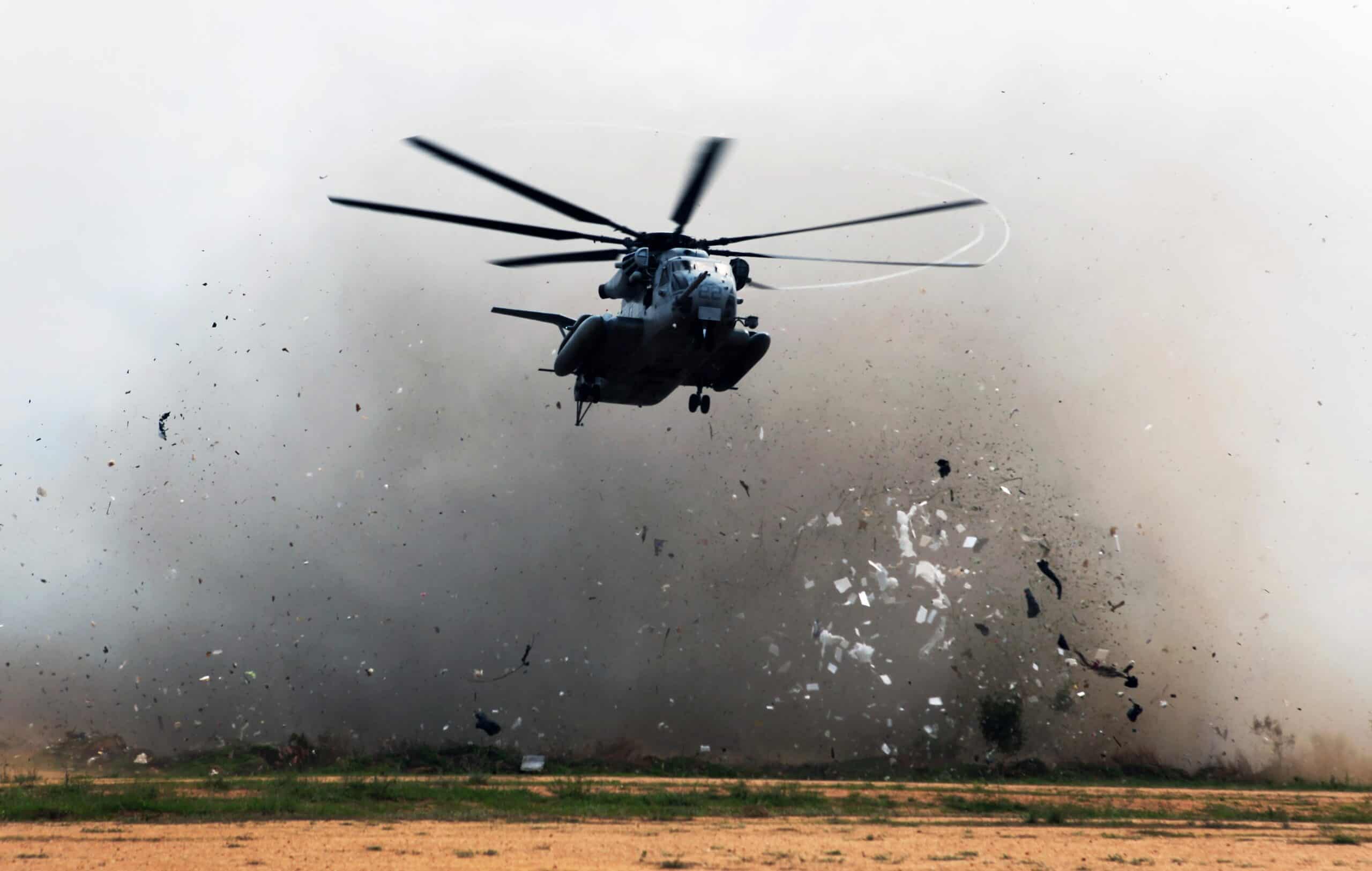
- Type: Super heavy-lift transport helicopter
- Year introduced: 1981
- Active aircraft: 135
- Top speed: 196 mph
- Armament: 12.7mm heavy machine guns, 12.7mm GAU-21 miniguns
The CH-53E Super Stallion has been the workhorse of the Marine Corps since the early 1980s. It’s designed to transport large payloads and can lift roughly 12,000 pounds externally. The CH-53K is the upgraded version of this helicopter that debuted nearly four decades later.
One of the Super Stallion’s key features is its aerial refueling capability, which allows it to extend its operational range for longer missions. This feature, along with its ability to operate from amphibious assault ships, gives the CH-53E the reach to perform missions at land and sea.
The Super Stallion has an impressive combat record as well, serving in operations like Desert Storm, Afghanistan and Iraq.
The CH-53E is powered by three General Electric T64-GE-416/416A turboshaft engines, each producing around 4,380 horsepower. These allow for the CH-53E to hit speeds of nearly 200 mph.
It’s Your Money, Your Future—Own It (sponsor)
Retirement can be daunting, but it doesn’t need to be.
Imagine having an expert in your corner to help you with your financial goals. Someone to help you determine if you’re ahead, behind, or right on track. With SmartAsset, that’s not just a dream—it’s reality. This free tool connects you with pre-screened financial advisors who work in your best interests. It’s quick, it’s easy, so take the leap today and start planning smarter!
Don’t waste another minute; get started right here and help your retirement dreams become a retirement reality.
Thank you for reading! Have some feedback for us?
Contact the 24/7 Wall St. editorial team.
